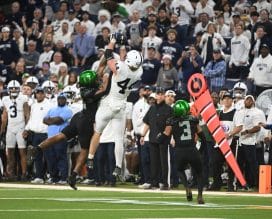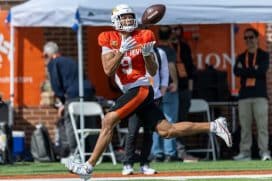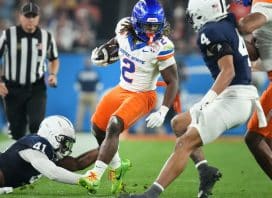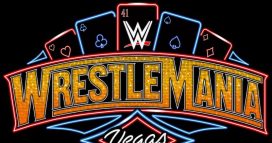Writer: Matt Albertson
Aaron Nola would be youngest Opening Day starter since Harry Coveleski
In February, ESPN Senior Writer Jayson Stark published an article about the Philadelphia Phillies' youth movement. In the article, Stark mentioned that if manager Pete Mackanin announced 22-year-old Aaron Nola as the Phillies Opening Day starter, Nola would be the youngest Opening Day starter for the Phillies in the live ball era (since 1920).
That's a long time and a lot of starters, especially when you consider that between 1929 and 1949, the Phillies only had one repeat Opening Day starter (Curt Davis in 1935 and 1936). Not surprisingly, the Phillies fielded some pretty lean teams in those years and only completed two seasons with above .500 records ( 1932: 78-76 and 1949: 81-37).
But unlike those years, the 2016 squad is viewed through a rose colored lens with Nola as a major piece in the franchise's rebuild. If he takes the mound on April 4, 2016 in Cincinnati, Nola will become the Phillies' youngest Opening Day starter since Harry Coveleski toed the rubber against the Boston Doves (present-day Atlanta Braves) 106 years ago on April 14, 1909.
Harry Frank Kowalewski was the fourth of five children born to Anthony and Ann Kowalewski on April 23, 1886 in Shamokin, Pennsylvania, then a borough on the western reaches of Pennsylvania's anthracite region. Three of Coveleski's brothers eventually played professional baseball at one level or another. Frank played for an outlaw Pennsylvania team in the Union Association in 1908 until he contracted rheumatism. John played 10 years in the low minor leagues while his younger brother Stan was a standout pitcher who spent most of his major league career with the Cleveland Indians and was inducted into the Hall of Fame in 1969.
John Heiselman, member of the Society for American Baseball Research (SABR), explained how arduous life was for Coveleski when he worked for a coal company:
"Anthony Kowalewski [Harry's father] worked as a coal miner in Shamokin, and like his brothers, Harry left school at the age of 12 to work in the mines, where he worked as a slate picker for $3.75 per week, also gaining the nickname "Donkey Boy" because he was responsible for driving the mules that carried supplies into and out of the mines."
A St. Louis Cardinals scout discovered Kowalewski playing for a local Shamokin team and signed him to a minor league contract in 1907:
"Like his younger brother Stan, when Harry entered professional baseball he anglicized his name to Coveleskie–the final "e" was not dropped until after his retirement."
Eventually, the Phillies signed him to a $250/month contract on September 7, 1907. Coveleski pitched well in four games but was sent down to the minor leagues in 1908, where he changed his sidearm delivery to an over-the-top delivery. The change paid terrific dividends and the Phillies called Coveleski back up to the majors near the end of the 1908 season and he almost single-handedly played "pennant spoiler."
John McGraw's Giants were tied for 1st place in the National League pennant race with the Chicago Cubs with 11 games remaining when the Phillies came to town on September 29, 1908. Coveleski pitched a six hit shutout in the second game of the September 29th doubleheader at the Polo Grounds, which knocked the Giants out of their first place tie. Two days later, in the second game of the October 1st doubleheader, Coveleski allowed only four hits in a 6-2 Phillies victory. Phillies manager Bill Murray promised Coveleski a $50 bonus if he would pitch against the Giants again on October 3rd. Coveleski accepted the bribe and faced off against Giants-great Christy Mathewson on October 3rd. It was a tight game with the Phillies leading the Giants 3-2 in the bottom of the ninth inning. With a runner on third base and nobody out, Coveleski retired the side and cemented his status as the "Giant Killer." The loss knocked New York out of first place for good, as the Cubs went on to win the pennant and the World Series, their last.
The Philadelphia Inquirer set the stage for the 1909 season opener against the Boston Doves in its paper from April 14, 1909:
"Boston, April 13 – Boston fans today are inbricating their vocal chords, furnishing up their megaphones and digging down into their jeans for the price of little slips of posterboard which will admit them to the South End baseball grounds, for tomorrow the National game is here in all its glory."
Unfortunately, Coveleski failed to repeat his glory from 1908. Philadelphia led the game 3-0 until the fifth inning, when the Doves "connected with the delivery of Coveleskie [sic] with a vengeance and before the inning was over sent him to the bench…". Boston scored four runs off of Coveleski in the fifth inning. He finished the 1909 season with a 6-10 record and a 2.74 ERA in 121.2 innings of work and was subsequently traded to the Cincinnati Reds.
Coveleski was sent down to the minor leagues after poor performances with the Reds in 1910. He did, however, make a successful comeback with the Detroit Tigers from 1914-1918. Coveleski won at least 20 games each year from 1914-1916 and logged a total of 65 wins, 36 losses, and 940.1 innings pitched. But his arm was spent and he could not regain his stellar form in 1917 and was eventually released in 1918.
After his career, Coveleski moved back to Shamokin and worked as a police officer, cafe owner, and watchman. Eventually, he opened a tavern and named it "The Giant Killer."
Coveleski died in 1950 at the age of 64 and was interned at St. Stanislaus Cemetery in Shamokin.
Post Script: Coveleski has the distinction of being one of 25 left-handed pitchers who won 20 games in at least one season but have less than 100 career wins. In his nine year career, Coveleski amassed 81 wins (17th fewest). Babe Ruth rounds out the list with 94 wins (25th fewest).
—
All information for this article were obtained from: ESPN, Baseball-Reference, the SABR bio project and the Philadelphia Inquirer (via newsbank.com).
Matt Alberston (@mdalbert88) is a historical columnist on Philliedelphia.com.





